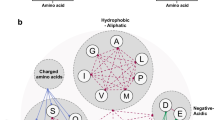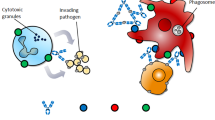Abstract
In the early stages of antibody drug development, it is imperative to conduct a comprehensive assessment and enhancement of the druggability attributes of potential molecules by considering their fundamental physicochemical properties. This study specifically concentrates on the surface-exposed hydrophobic region of the candidate antibody aPDL1-WT and explores the effectiveness of the L309K mutation strategy. The resulting aPDL1-LK variant demonstrates a notable enhancement over the original antibody in addressing the issue of aggregation and formation of large molecular impurities under accelerated high-temperature conditions. The mutated molecule, aPDL1-LK, exhibits excellent physicochemical properties such as hydrophilicity, conformational stability, charge variant stability, post-translational modifications, and serum stability. In terms of biological function, aPDL1-LK maintains the same glycosylation pattern as the original antibody and shows no significant difference in affinity for antigen hPDL1 protein, CD16a-F158, CD64, CD32a-H131, and complement C1q, compared to aPDL1-WT. The L309K mutation results in an approximately twofold reduction in its affinity for CD16a-V158 and CD32a-R131. In vitro biological assays, including antibody-dependent cell-mediated cytotoxicity (ADCC), antibody-dependent cellular phagocytosis (ADCP), and complement-dependent cytotoxicity (CDC), reveal that the L309K mutation may decrease CD16a-V158-mediated ADCC activity due to the mutation-induced decrease in ligand affinity, while not affect CD32a-R131-mediated ADCP activity. In conclusion, the L309K mutation offers a promising strategy to enhance the druggability properties of candidate antibodies.






Similar content being viewed by others
References
Bailly M, Mieczkowski C, Juan V et al (2020) Predicting antibody developability profiles through early stage discovery screening. Mabs 12(1):1743053
Chennamsetty N, Voynov V, Kayser V et al (2009) Design of therapeutic proteins with enhanced stability. Proc Natl Acad Sci USA 106(29):11937–11942
Chennamsetty N, Voynov V, Kayser V et al (2010) Prediction of aggregation prone regions of therapeutic proteins. J Phys Chem B 114(19):6614–6624
Delidakis G, Kim JE, George K et al (2022) Improving antibody therapeutics by manipulating the fc domain: immunological and structural considerations. Annu Rev Biomed Eng 24:249–274
Galvez-Cancino F, Simpson AP, Costoya C et al (2024) Fcγ receptors and immunomodulatory antibodies in cancer. Nat Rev Cancer 24(1):51–71
Gao ZZ, Jiao JY, Zhou YQ et al (2023) A novel monospecific tetravalent IgG1-(scFv)(2) version shown enhanced neutralizing and Fc-mediated effector functions against SARS-CoV-2. 3 Biotech 13(8):283
Gong R, Wang Y, Ying T et al (2013) N-terminal truncation of an isolated human IgG1 CH2 domain significantly increases its stability and aggregation resistance. Mol Pharm 10(7):2642–2652
Jin S, Sun Y, Liang X et al (2022) Emerging new therapeutic antibody derivatives for cancer treatment. Signal Transduct Target Ther 7(1):39
Kaplon H, Crescioli S, Chenoweth A et al (2023) Antibodies to watch in 2023. Mabs 15(1):2153410
Li D, Gong R, Zheng J et al (2017) Engineered antibody CH2 domains binding to nucleolin: Isolation, characterization and improvement of aggregation. Biochem Biophys Res Commun 485(2):446–453
Li B, Wang S, Shan B et al (2023) A PD-L1xCD3 bispecific nanobody as a novel T-cell engager in treating PD-L1 overexpression melanoma. Mol Immunol 163:20–27
Mimura Y, Mimura-Kimura Y, Saldova R et al (2022) Enhanced immunomodulatory effect of intravenous immunoglobulin by Fc galactosylation and nonfucosylation. Front Immunol 13:818382
Qing R, Hao S, Smorodina E et al (2022) Protein design: from the aspect of water solubility and stability. Chem Rev 122(18):14085–14179
Singh S, Singh N, Baranwal M et al (2023) Understanding immune checkpoints and PD-1/PD-L1-mediated immune resistance towards tumour immunotherapy. 3 Biotech 13(12):411
Waibl F, Fernández-Quintero ML, Wedl FS et al (2022) Comparison of hydrophobicity scales for predicting biophysical properties of antibodies. Front Mol Biosci 9:960194
Xu Y, Wang D, Mason B et al (2019) Structure, heterogeneity and developability assessment of therapeutic antibodies. Mabs 11(2):239–264
Yang C, Gao X, Gong R (2017) Engineering of Fc Fragments with optimized physicochemical properties implying improvement of clinical potentials for Fc-based therapeutics. Front Immunol 8:1860
Yin S, Chen Z, Chen D et al (2023) Strategies targeting PD-L1 expression and associated opportunities for cancer combination therapy. Theranostics 13(5):1520–1544
Yu J, Song Y, Tian W (2020) How to select IgG subclasses in developing anti-tumor therapeutic antibodies. J Hematol Oncol 13(1):45
Zhang W, Wang H, Feng N et al (2023) Developability assessment at early-stage discovery to enable development of antibody-derived therapeutics. Antib Ther 6(1):13–29
Funding
This work was supported by [Special Scientific Research Fund Project of Hospital Pharmacy of Zhejiang Pharmaceutical Society] under [Grant number 2023ZYY03].
Author information
Authors and Affiliations
Corresponding authors
Ethics declarations
Conflicts of interest
On behalf of all authors, the corresponding author states that there is no conflict of interest.
Informed consent
Not applicable.
Research involving human participants and/or animals
Not applicable.
Rights and permissions
Springer Nature or its licensor (e.g. a society or other partner) holds exclusive rights to this article under a publishing agreement with the author(s) or other rightsholder(s); author self-archiving of the accepted manuscript version of this article is solely governed by the terms of such publishing agreement and applicable law.
About this article
Cite this article
Li, C., Yao, Qq. & Li, J. Druggability properties of a L309K mutation in the antibody CH2 domain. 3 Biotech 14, 152 (2024). https://doi.org/10.1007/s13205-024-04000-y
Received:
Accepted:
Published:
DOI: https://doi.org/10.1007/s13205-024-04000-y




